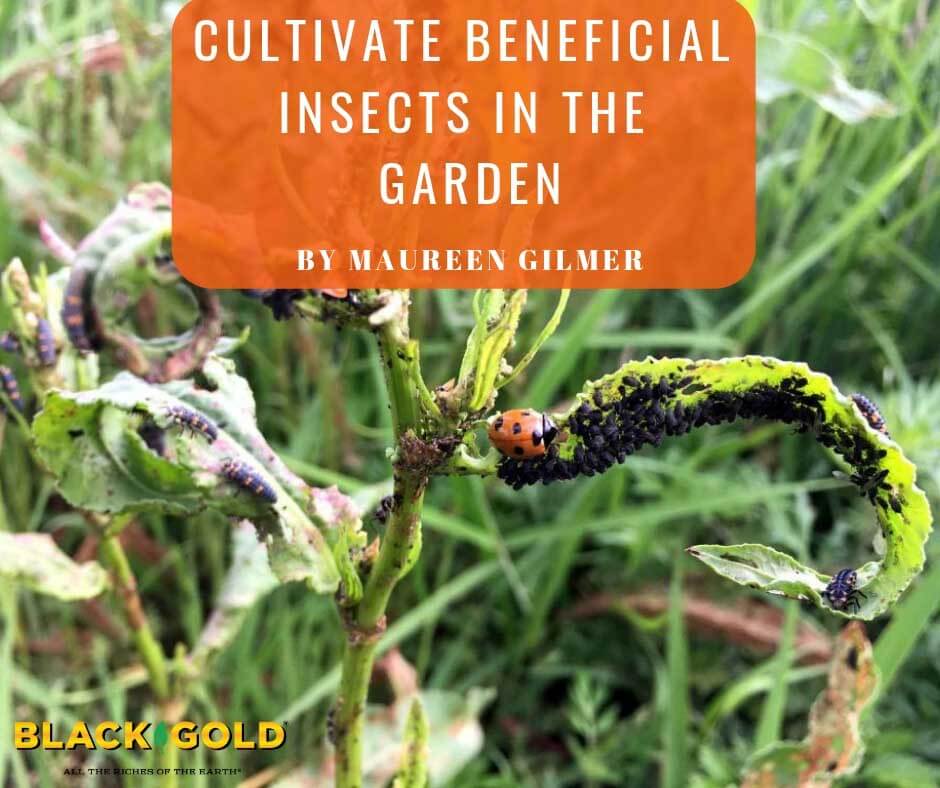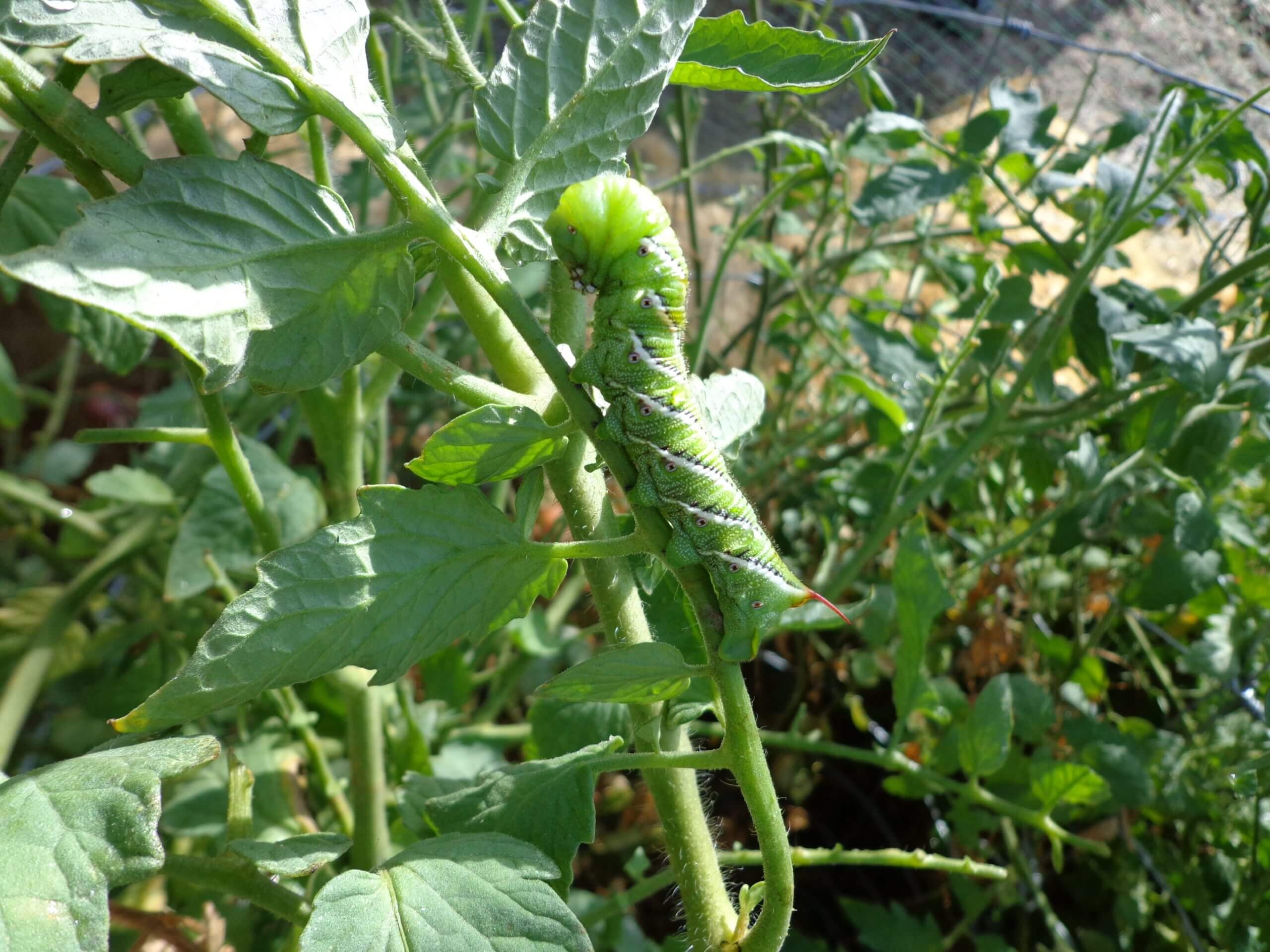
Your garden is a battlefield with more life and death drama than the Serengeti during wildlife migrations. Among your beautiful plants and flowers, there is that age-old war playing out every day as the insect world fights over who eats what. Some insects are pests that eat your plants – they are garden prey. Other insects are there to eat the plant pests – they are the predators. Your goal is to provide the perfect environment for predators to thrive to help keep insect pest populations under control.
Where to Find Garden Pests

New gardeners need to know this: plant pests, such as white flies, aphids and mites, show up on the weakest plants first. When a plant’s natural resistance starts to fail, it sends out stress hormones that attract the pests that feed on them, so always study stressed plants to get a real pest assessment. On the upside, stressed plants also produce stress compounds that attract the beneficial insects that consume these pests, which is why it’s smart to hold off on the pesticides.
All too often the response to finding pests on your plants is to spray everything in sight with botanical pesticides to stop the spread. Sadly, there are often beneficial troops in the field, such as ladybugs, that will get killed, too. Spray should always be a last resort. The best solution is to either give the plant extra care to help it fight off pests. You can also remove badly infested stems or whole plants entirely, to quickly relieve pests from your garden. This decision is up to you, commander and chief, but identifying your garden’s beneficials will help you get to know them, so you can protect them.
Beneficial Insects

Praying mantids: Easy to spot due to their folded, prayer-like front pincers, praying mantids are large and fearless. These champion bug eaters are a gardener’s palace guard. They consume a great number of insects, particularly larvae which cause rapid, serious damage. You’ll find mantid egg cases (which look like they are made of builder’s foam) on bark, stems, fences, and walls, so don’t disturb them. New mantids will hatch as nymphs; tiny identical copies of their parents.

Ladybugs: These are our best bugs for teaching the kids about insect pests and beneficials because ladybugs are cute, not scary. You can always find ladybugs in thriving, insecticide-free gardens. Wherever there are aphids you will find these spotted red beetles and their weird looking larvae. The larvae are the hungriest, eating loads of aphids at a go, but this is also the stage when they are most vulnerable to pyrethrins and other pesticides.
Lacewings: These delicate transparent insects are voracious feeders that travel from plant to plant gobbling up pests, such as aphids, mites, whiteflies, mealybugs, and thrips. They’re universally present, like ladybugs, in diverse gardens where there are no chemicals to limit their numbers. Lacewings have long been used for the control of whiteflies in greenhouses, and they do lots of good outdoors too.

Garden spiders: Most folks are naturally afraid of spiders, but in the garden, these predators are at the top of the list when it comes to attacking pests. There are many types of garden spiders, which cast a wide net to catch prey on the wing or as they move from plant to plant. Even though they may catch the occasional pollinator, they do far more good than damage.
Heavy artillery: Though not insect predators, the heavy bombers of your garden are birds in the daytime and bats at night. Bats are vital to consuming tomato hornworm moths, and a single bat can eat up to 600 mosquitoes a night, which benefits everyone.
Quick List of Common Garden Pests

Aphids: These sucking insects attach many flower and vegetable plants, and populations can get out of control fast without the help of beneficials. Their natural predators include ladybugs and lacewings.
Mealybugs: White mealybugs crawl along plant stems and leaves sucking out their juices and doing a lot of damage fast. They particularly like stem crevices. Natural predators include ladybugs, lacewings, and the mealybug destroyer (Cryptolaemus montrouzieri).
Spider Mites: Tiny spider mites populate quickly and suck juices from below the leaves of plants. The beetles and larvae of the all-black spider mite destroyer ladybug (Stethorus picipes) will do serious damage to populations. Standard ladybugs will also eat them.
Thrips: These tiny sucking insects damage the leaves and flowers of many garden plants. Ladybugs and lacewings are two of their biggest natural predators.
Whiteflies: Ladybugs and lacewings will attack the clouds of small whiteflies that feed on the leaves of many garden flowers and veggies.
Leafhoppers: Fast-moving leafhoppers suck the juices from plant leaves and spread viral diseases along the way. Ladybugs and lacewings will help keep them under control.
Assorted larvae: The larvae of many pesky beetles and moths will chew on lots of favorite garden vegetables and flowers. Predators include praying mantids, lacewings, and ladybugs. Birds and bats will also feed on them.
Building Insect Armies

Your first protective step should be to give your plants good care to keep them strong and vigorous! Do not draw your sword to kill a fly, as the Korean saying goes. Build your armies instead by tending your plants. Use quality Black Gold potting soil and amendments to help keep plants vigorous and further support the age-old secret war of the garden. Manage pest populations naturally, by removing badly infested stems and plants. Do this and you’ve become a partner of your garden predator protectors who will return the favor, just as beloved watchdogs protect homes at night.

